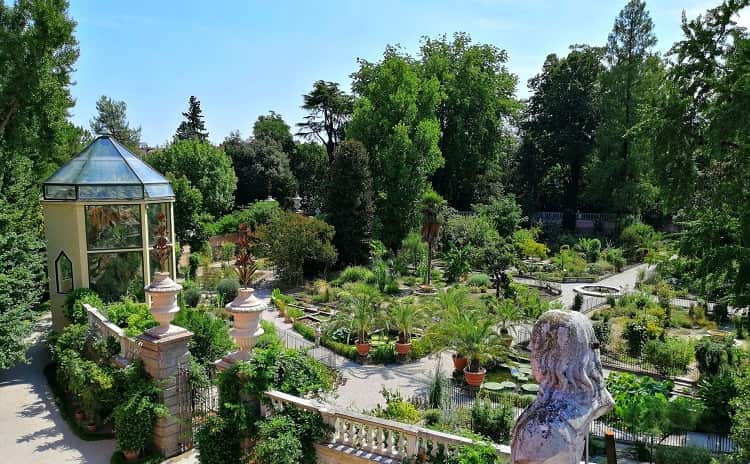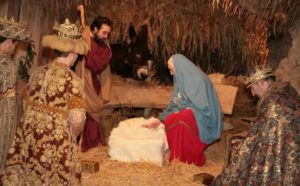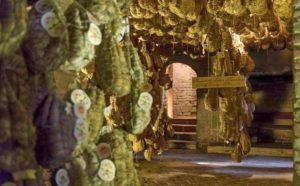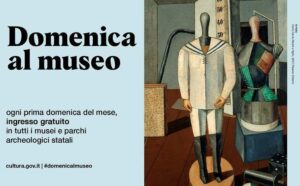The Botanical Garden of Padua is the oldest botanical garden in the world which is still located in its original location of about 2.2 hectares that once was a rural area out of town and now is the center of Padua.
The collection of cultivated plants is currently around 6,000 specimens.
Since 1997, the Botanical Garden of Padua is a UNESCO World Heritage Site.
The garden was founded in July 1545, when the proposal to create a Hortus Medicus in Padua was approved. This proposal aimed to cultivate, observe, study, and experiment with both indigenous and exotic medicinal plants.
It was established for the cultivation of medicinal plants, which constitute the majority of the “Simple Medicines“, natural medicines. For this reason, the name of the garden originally was “Garden of Simples“.
Over time, the Botanical Garden has followed the evolution of botanical branches, adapting its collections to the changing educational and scientific needs.
The area where it stands has a trapezoidal shape. Once these 2 hectares were owned by the Benedictine monks of Saint Giustina.
The original plot of the Garden is the so-called Hortus Sphaericus, a square within a circle of about 85 meters in diameter, divided into four smaller squares, called quarters, by two main intersecting paths oriented according to the cardinal points.
The circular shape and the peculiar geometric division into 16 sections, is rich in references and cosmological symbols, typical of the Renaissance period.
Currently each quarter, equipped with a central fountain, is divided into about 250 parcels arranged according to various and elegant geometric figures.
Over the centuries, the external architecture of the Garden has been embellished:
– in the 1700s the four monumental gates, the wrought-iron gates and the balustrade were built
– later the fountain of Theophrastus, a Greek Philospher of the third century B.C., considered to be the father of botany, and the fountain of the Four Seasons were built
– in the 1800s, three sundials were built (one cubic, one spherical and one cylindrical), and the semicircular classroom holding hundred students was built and still in use for lessons and meetings, known as the “botanical theatre”.
The House of the Director (the Prefect), dating back to the seventeenth and eighteenth centuries, now hosts exhibitions, a historical library, with precious botanical manuscripts and illustrated books, the archives of the botanical garden and the herbarium.
Curiosity. In the garden there are some trees over a hundred years old, such as the St. Peter’s palm (Chamaerops humilis) planted in 1585, an oriental plane tree (Platanus orientalis) with a hole in the trunk maybe caused by lightning, a majestic specimen of ginkgo (Ginkgo biloba), a magnolia (Magnolia grandiflora), all dating back to the mid-eighteenth century and considered to be among the oldest specimens of these living species in Europe.
Also of great interest is a trunk of subfossil oak (Quercus robur) lived around 700 BC, as proof of the forests which once covered the entire Po Valley.
The evolution of the Botanical Garden – In a new area next to the ancient botanical garden, five very modern greenhouses were built in 2014 which form the Biodiversity Garden, an educational microcosm where visitors can experience the different climatic environments on Earth. Along the way, visitors can cross the planet ‘s biomes, from tropical to temperate to desert.
In recent years, the Botanical Garden has also set up an educational itinerary designed specifically for the blind and visually impaired, the first in Italy, with collections of plants appreciable by touch or smell, and providing information in Braille writing.
In its nearly five centuries of activity, the Botanical Garden has thus turned from a simple “agricultural land” into a prestigious cultural center, the pride of the University and the City, visited every year by thousands of people, academics, school groups and ordinary citizens.
In its Visitor Center visitors can find extensive documentation on history, architecture and collections, with audio guides and multimedia guides available.
The awards – In 1997 the Botanical Garden of Padua was inscribed on the UNESCO World Heritage List as a cultural asset. This list includes all the cultural or natural properties that, due to their quality, are recognized “exceptional universal values” as representing invaluable and irreplaceable assets not only of the nation to which they belong, but of the whole of humanity.
In 2008, the Garden was also included in the 3rd “Rapporto EURISPES” on the excellences of Italy, and counted among the hundred most representative cases of “Italian successes” within the national system.
USEFUL INFORMATION
Opening hours on the website>>>
Entrance with a fee>>>
See also the facebook page of the botanical garden>>>
Photos from the botanical garden
ARE YOU IN VENETO?
See on ItalybyEvents a selection of further events or places to visit in Veneto>>>
And why not try the traditional food of the Veneto>>> and taste its fine wines>>>









